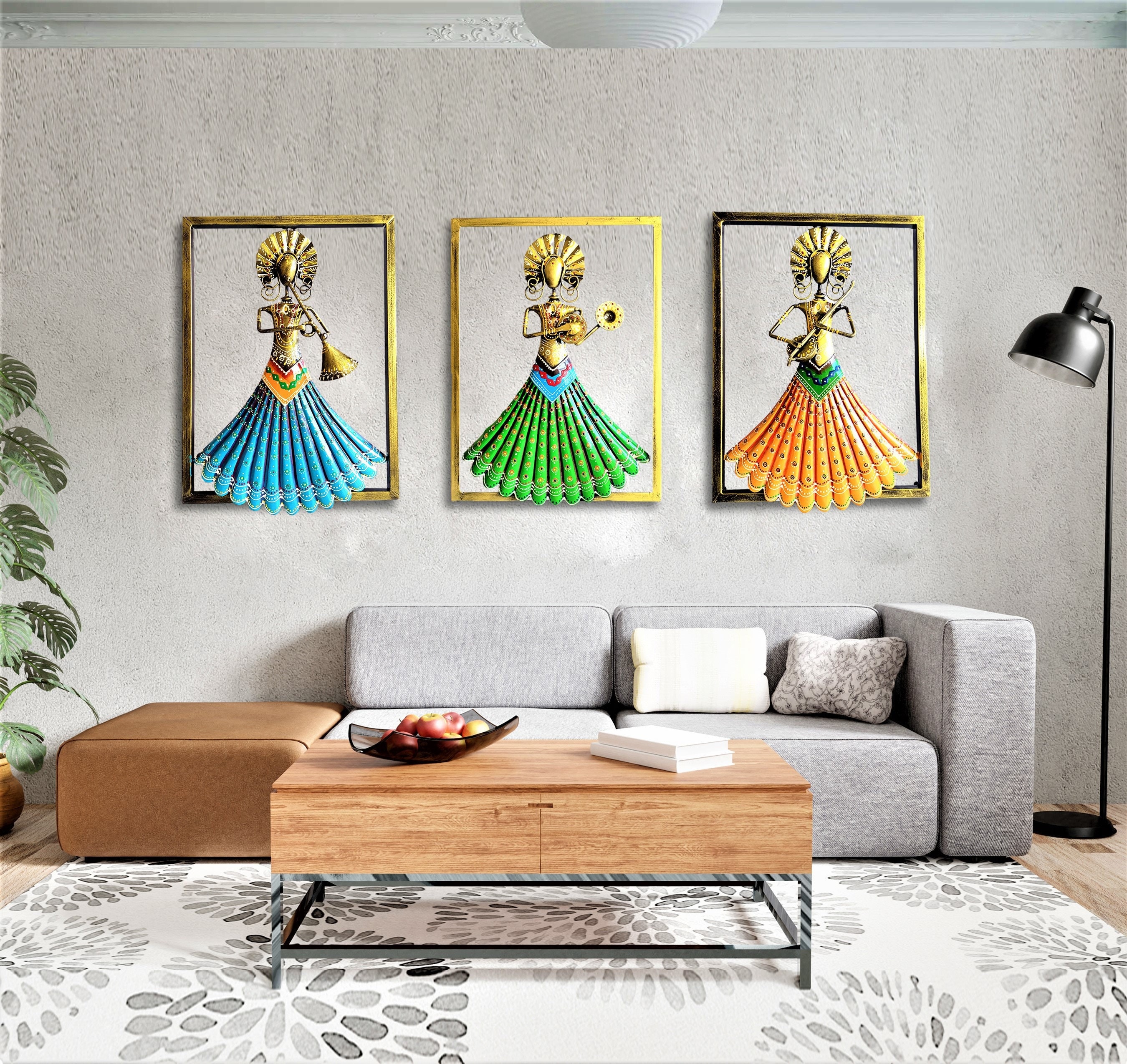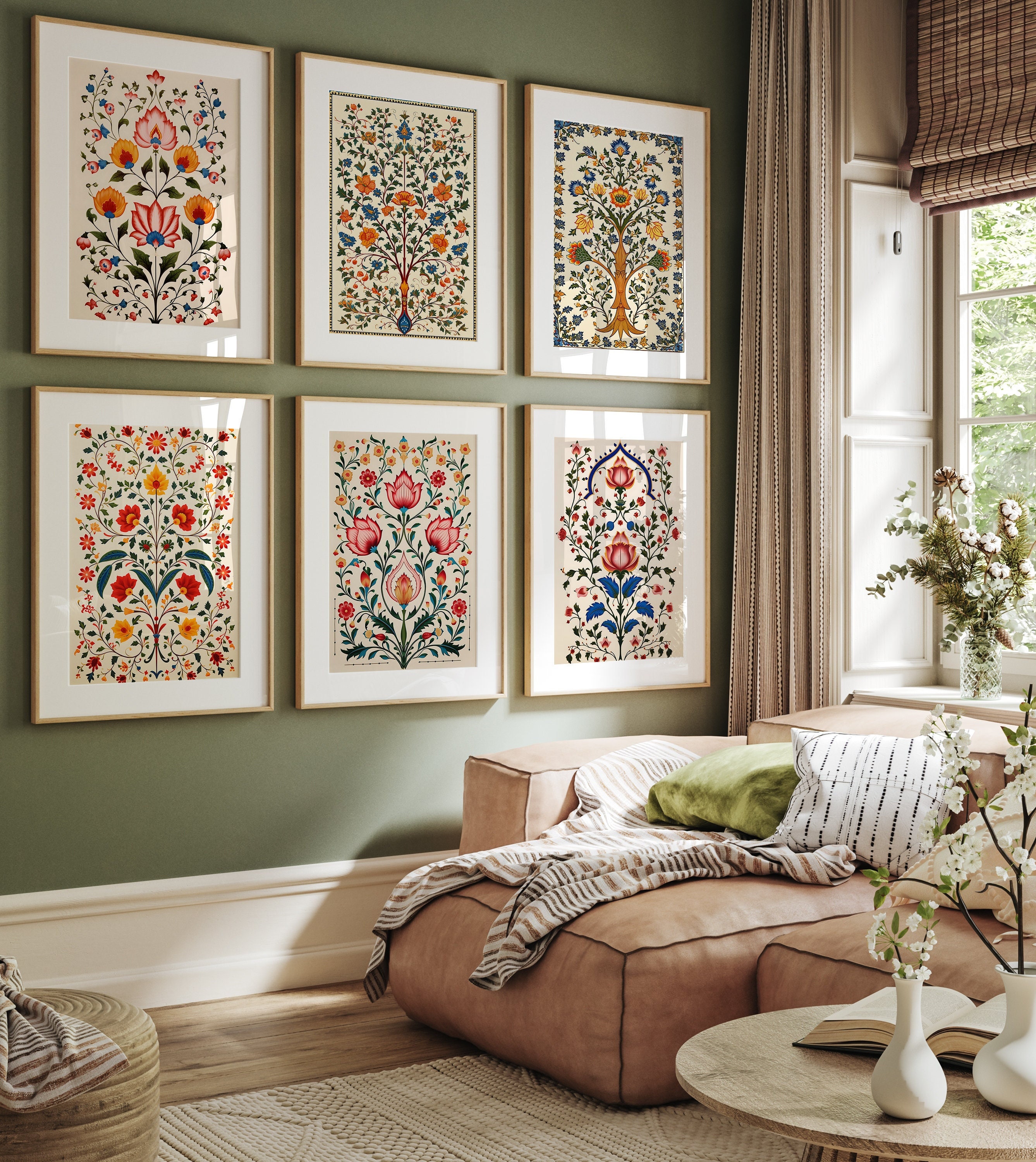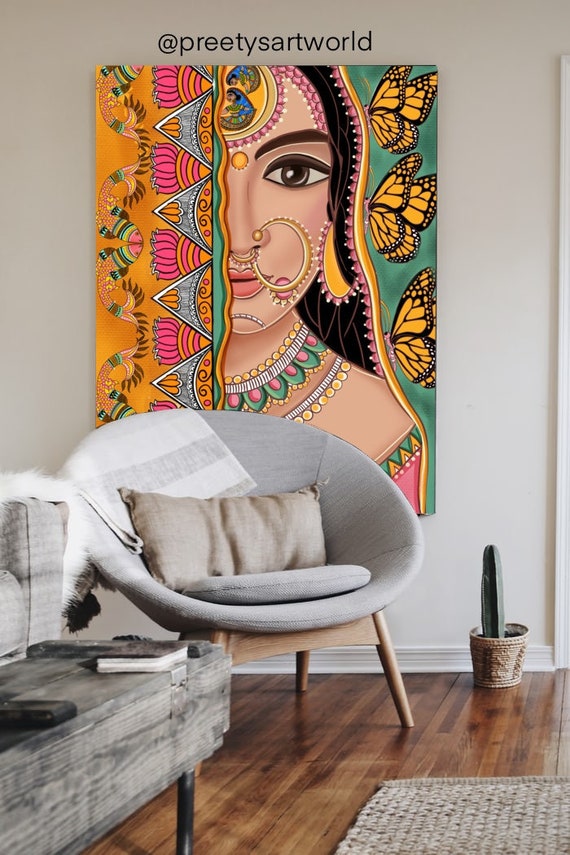Wall art has an incredible power to transform any space. In this guide, we will delve into the diverse world of Indian wall art decor, exploring its history, styles, techniques, and how you can incorporate it into your own home. Having lived in India for several years, I have a personal connection with this art form, and I’m excited to share my insights to help you appreciate and possibly add some Indian wall art to your collection.
What is Indian Wall Art Decor?
Indian wall art decor encompasses a variety of traditional and contemporary techniques used to enhance walls with artistic expressions. From intricate paintings to elegant textiles, the art reflects India’s rich culture and history. Various regions of India boast unique styles and methods.
Historical Context of Indian Wall Art
Indian wall art has deep roots, dating back to ancient times. Early artworks were often religious or ceremonial, serving community and spiritual purposes. As time evolved, so did the styles and mediums, leading to a vibrant array of wall decor.
Popular Styles of Indian Wall Art
When it comes to Indian wall art decor, there are numerous styles to choose from. Let’s take a closer look at the most celebrated forms:
Madhubani Art
Madhubani painting is a traditional form from Bihar, known for its vibrant colors and intricate patterns. It often features themes from mythology and nature.

Characteristics of Madhubani Art
- Use of natural colors and dyes
- Detailed motifs of flora, fauna, and deities
- Patterns that tell stories
Pattachitra Art
This ancient art form originates from Odisha. Pattachitra paintings are known for their intricate details and mythological narratives.

Unique Features of Pattachitra Art
- Use of natural colors made from stones and plants
- Storytelling through visual narratives
- Typically made on cloth or dried palm leaves
Hailing from Maharashtra, Warli art uses simple geometrical shapes to depict daily life and nature.

Elements of Warli Art
- Use of white paint on mud walls
- Nature-centric motifs
- Symbolic representation of human activities
Materials Used in Indian Wall Art
Understanding the materials is crucial for appreciating Indian wall art. Here’s a closer look:

Natural Dyes
Artists often use natural dyes derived from plants, minerals, and insects. These are eco-friendly and result in vibrant, lasting colors.
Canvas and Paper
Many Indian artists use cotton canvas or handcrafted paper. These materials enhance the artwork’s texture and longevity.

Textiles
Textiles, such as silk and cotton, are common mediums particularly in regions known for their embroidery and weaving traditions.
Techniques in Creating Indian Wall Art
The techniques of Indian wall art vary widely by region and style:

Freehand Painting
This technique allows artists to create intricate designs without stencils, resulting in unique pieces.
Block Printing
Common in textile art, this involves carving designs into wood blocks and applying dye before pressing onto fabric.

Embroidery
Stitching is a popular method for decorating textiles, adding depth and texture to the artwork.
How to Incorporate Indian Wall Art into Your Home
Now that we’ve explored the basics, let’s discuss how to bring Indian wall art into your space:
Choosing the Right Artwork
Consider your personal style and the mood you want to create. Whether you prefer vibrant Madhubani paintings or subtle Warli art, the choice should resonate with you.
Mixing with Modern Decor
Indian wall art can beautifully complement modern interiors. Consider pairing traditional pieces with minimalist furniture to create a balanced aesthetic.
Placement Tips for Maximum Impact
Here are some tips for displaying your wall art:
- Focus on a feature wall: Create a focal point in your room.
- Gallery-style arrangement: Mix different styles and sizes for an eclectic look.
- Incorporate lighting: Use spotlights to highlight specific pieces.
Comparison of Different Indian Wall Art Styles
| Style | Origin | Characteristics | Best Compatibility |
|---|---|---|---|
| Madhubani | Bihar | Vibrant colors, intricate designs | Traditional and bohemian interiors |
| Pattachitra | Odisha | Mythological themes, detailed patterns | Contemporary and cultural spaces |
| Warli | Maharashtra | Geometric shapes, nature-focused | Modern and rustic homes |
Pros and Cons of Indian Wall Art
Pros
- Enhances aesthetic appeal
- Rich cultural significance
- Diverse styles for different tastes
- Natural materials used in many cases
Cons
- Can be expensive depending on the artist
- Maintenance required for certain types (e.g., textiles)
- Limited availability in some regions
Frequently Asked Questions (FAQs)
What are the common themes in Indian wall art?
Common themes include mythology, nature, daily life, and cultural traditions. Each style brings its unique perspective to these themes.
How can I care for Indian wall art?
Depending on the material, you may need to dust them regularly, avoid direct sunlight, and use gentle cleaning methods if necessary.
Where can I buy authentic Indian wall art?
Look for local artisans, online marketplaces specializing in handmade crafts, or art fairs that showcase regional talent.
Conclusion: Bringing Indian Wall Art into Your World
Incorporating Indian wall art into your decor not only enhances the visual appeal of your space but also connects you to a rich cultural tradition. Whether you are drawn to the vibrant colors of Madhubani, the storytelling of Pattachitra, or the simplicity of Warli, there’s something for everyone. As you embark on this journey of artistic exploration, remember to enjoy the process, and make it uniquely yours.